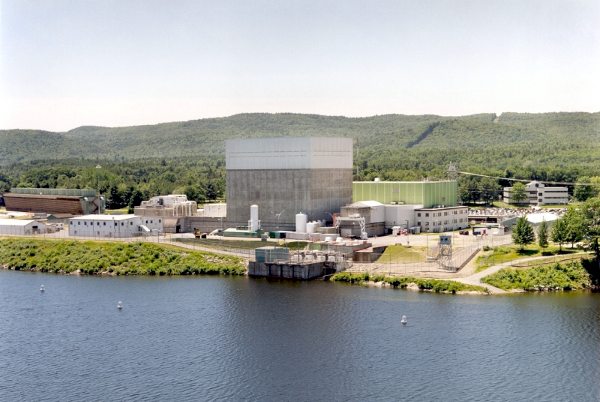Vermont Yankee Nuclear Plant: Shut It Down

Generating electricity from a controlled nuclear reaction is an interesting idea. Unfortunately, human beings do not currently demonstrate sufficient intelligence or wisdom to do it safely or economically.
Take for example the Vermont Yankee Nuclear Plant, located in Vernon, Vermont. It went online in 1972 with a license to generate 500 megawatts of electricity for forty years. It is now in its forty-first year of operation, and since 2006 has been operating at 120% of original capacity, generating 620 megawatts. Both of those facts are proof that economic greed and a failure to construct a rational energy plan for America have trumped good science and common sense.
Nuclear reactors are constructed of metal and concrete. Both deteriorate with time, and both deteriorate faster when subjected to radiation and high temperatures. Some of this can be ameliorated with proper maintenance, but Vermont Yankee is owned and operated by a corporation, Entergy, whose primary responsibility is to generate profits for investors. Proper maintenance of the reactor costs lots of money.
So when the Nuclear Regulatory Commission (NRC) voted in 2006 to allow VT Yankee to increase power output by 120 megawatts, and when they voted in 2011 to renew VT Yankee’s operating license for another twenty years, it is indisputable that they considered Entergy’s profits, New England’s energy needs, and the job security of the plant’s 600 employees as being more important than safety. Would you take an old car that has been on the road longer than it was designed for, and run it 24/7 at 120% of top speed?
It is worth noting that the Chairman of the NRC, Gregory Jaczko, has just been forced out because he felt strongly that reactor safety was being subjugated to economic concerns. The scientific facts are obvious. VT Yankee is deteriorating. It has been leaking radioactive tritium, a cooling tower collapsed in 2007, its spent fuel pool is near capacity (3353 spent fuel assemblies, enough to contaminate thousands of square miles in an accident), and 88 tons of additional spent fuel stored in dry casks was accidentally dropped by a crane in 2008.
VT Yankee is a boiling water reactor, designed and built by GE, of the exact same design as the plants at Fukushima, Japan that melted down in March of 2011 and have been releasing horrendous amounts of radiation ever since. Besides the core meltdowns at Fukushima, the storage of massive amounts of spent fuel in cement pools on top of the reactor containment vessels has been clearly revealed as an unacceptable safety hazard, yet this continues at both Fukushima and VT Yankee.
Any rational appraisal, by either informed scientists or laypersons, would conclude that VT Yankee should be shut down and decommissioned as soon as is humanly possible. The plant has proven itself to be unsafe, the corporation running it and the regulators overseeing it are more concerned with short term economic and energy supply concerns than with the health and welfare of the millions of people living within range of a potential accident. Plus, when the head of the NRC talks about safety before profits, he is forced out. Perhaps humans are not intelligent enough to generate electric power from nuclear energy safely. They cannot figure out how to do it economically without ignoring the costs of spent fuel storage, decommissioning outdated plants, and insuring for losses in case of an accident. And human beings are not wise enough to see that energy conservation is the only rational solution to increasing demand.
Entergy wants to generate more power and profits, regardless of the long term risks and costs, and the US government encourages this short-sighted foolishness. The Vermont State Senate voted 26 to 4 to deny relicensing in 2010, but the federal NRC overruled this and the case is currently in litigation. As of today, the score is stupidity 1 and scientifically-informed common sense 0.




